Starting Out — Preface All You Do With Attitude
Sharpen Your Attitude—Sharpness Comes First
I think when we are new woodworkers starting out we inevitably arrive at a point where we experience sharpness for the very first time. It’s a revelation. At first we are content if the chisel just cuts and shavings rise from the plane throat, but that introduction to true sharpness almost shocks us with the true surprise. I mean that what we formerly thought to be acceptably sharp suddenly pales against the sharpness we now encounter at the cutting edge of their work. This happened for me and I am sure that unless someone teaches you as we do in our classes what sharpness really is, you will understand why I am saying all of this. My hope in some ways is that this actually happens with the first edge tool you pick up. Rarely will this be the case. On the other hand I was glad to know what sharpness was not, that way I enjoyed the revelation of sharpness with the wide-eyed surprise it deserves.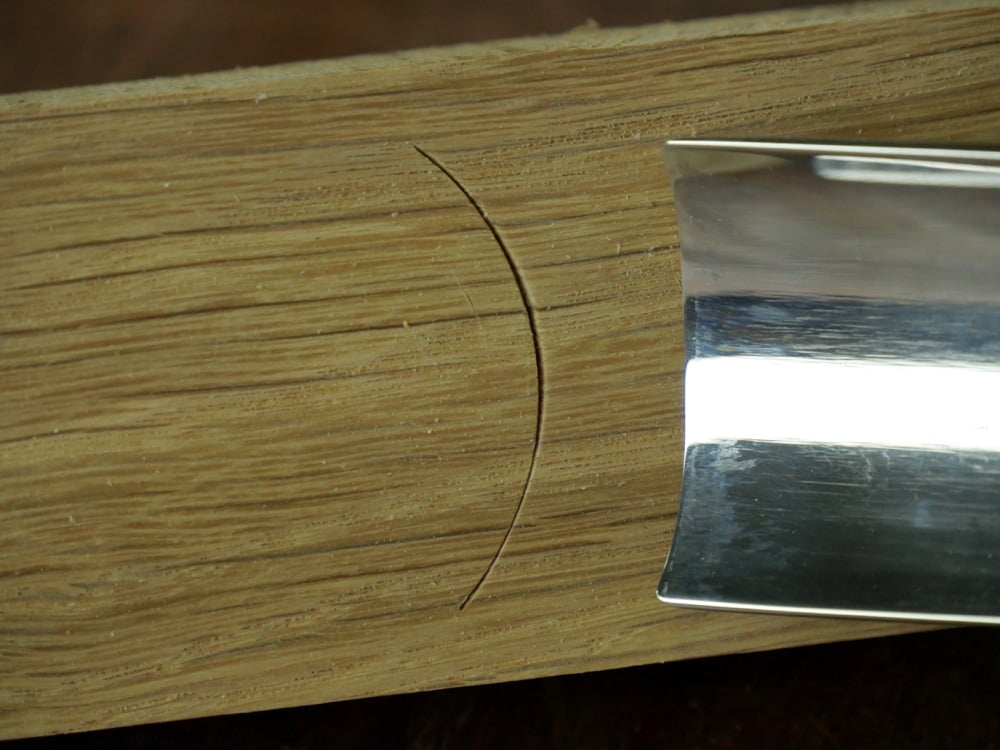
Of all the areas I see neglected, sharpness is the foremost. In my view sharpness, accuracy and sensitivity can be used interchangeably as nouns in the sense that reactivity and responsiveness become highly refined according to demand and we can reprogram ourselves to make change immediate. The choice between dull tedium and enjoyment in our craft work depends on quickness in making change happen. Stay as sharp as possible all the time.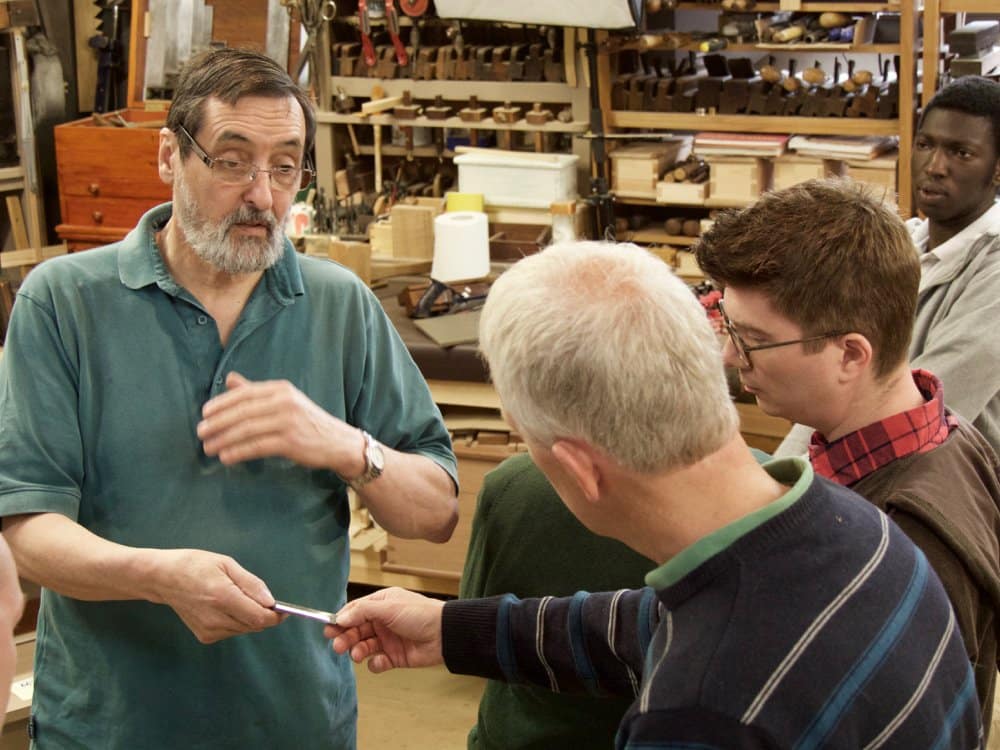
For students in my classes the planes are ultra sharp and correctly set for when they arrive in the first class to give them the experience I’m speaking of. So too the different saws. I believe this is the most effective way of changing someone’s attitude towards sharpness, sharpening and ultimately the significance of using and maintaining such sharp edges to hand tools. Realising not only that you must have sharp hand tools is of course critically important, but then knowing what sharp is can be a very different thing. 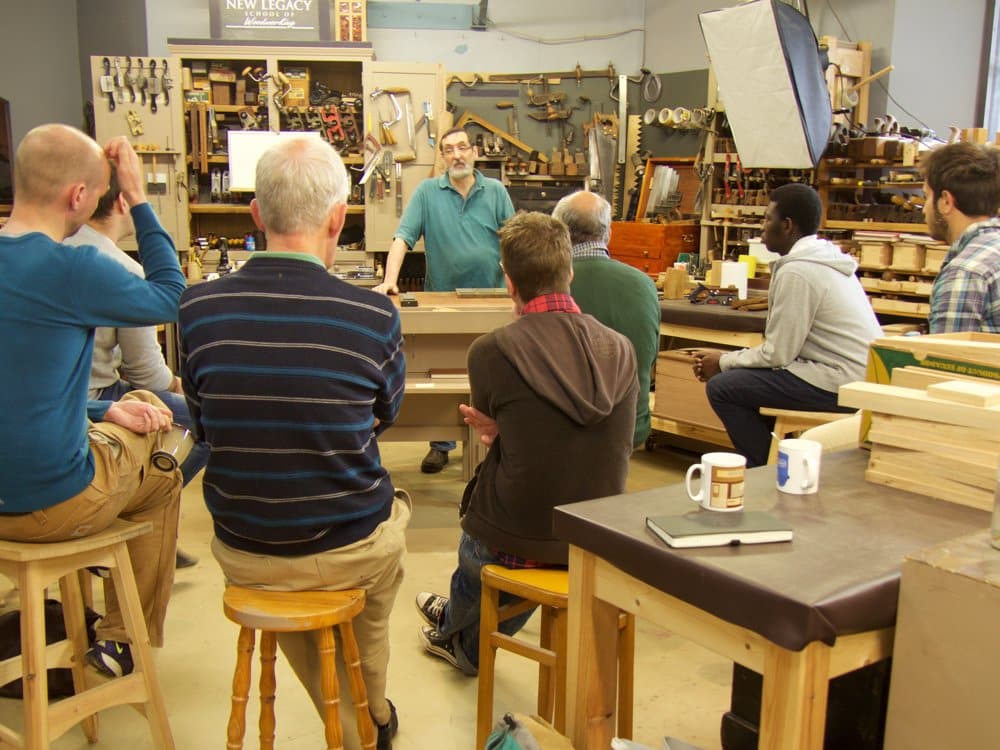
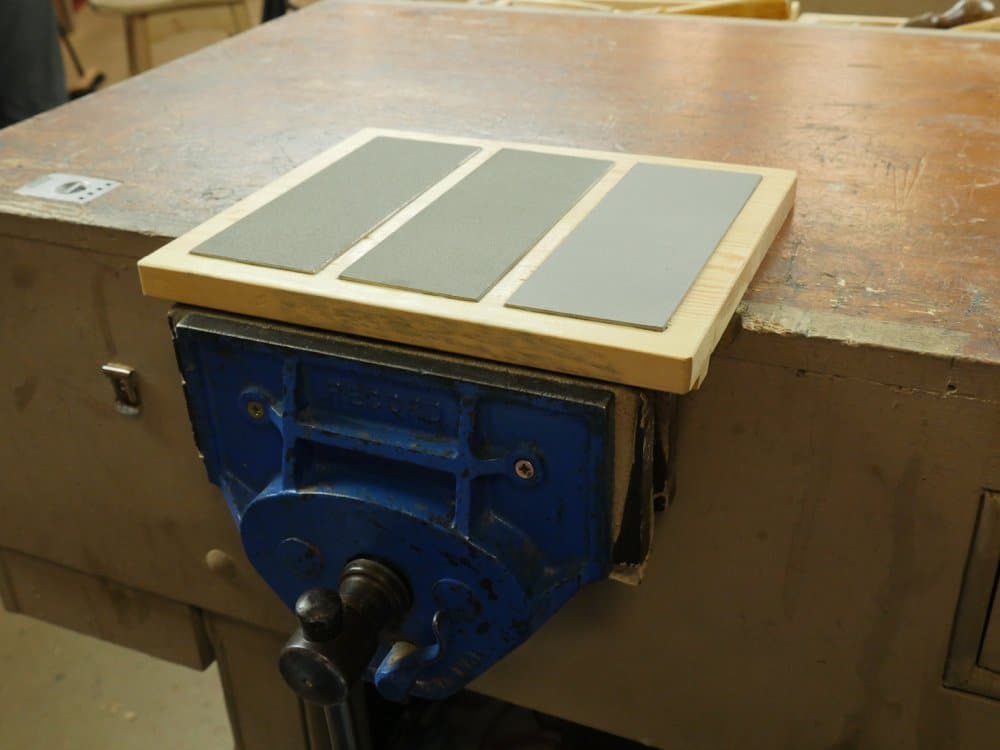
The tools you need to begin your woodworking journey are simple yet often the cause of great confusion when choosing hand tools is the massive choice. At one time this would have bemused an experienced craftsmen, but now they are mostly gone, the bemusement has gone too. Sales staff in general have little or no real working knowledge about the tools they sell but they have learned enough to sell convincingly. That’s unilaterally been my experience over the past 50 years. Take out the sales pitch steering you to the high-end stuff and the picture becomes clearer. Ask yourself the right questions and you will likely find a clearer answer than reading though a catalog of tools.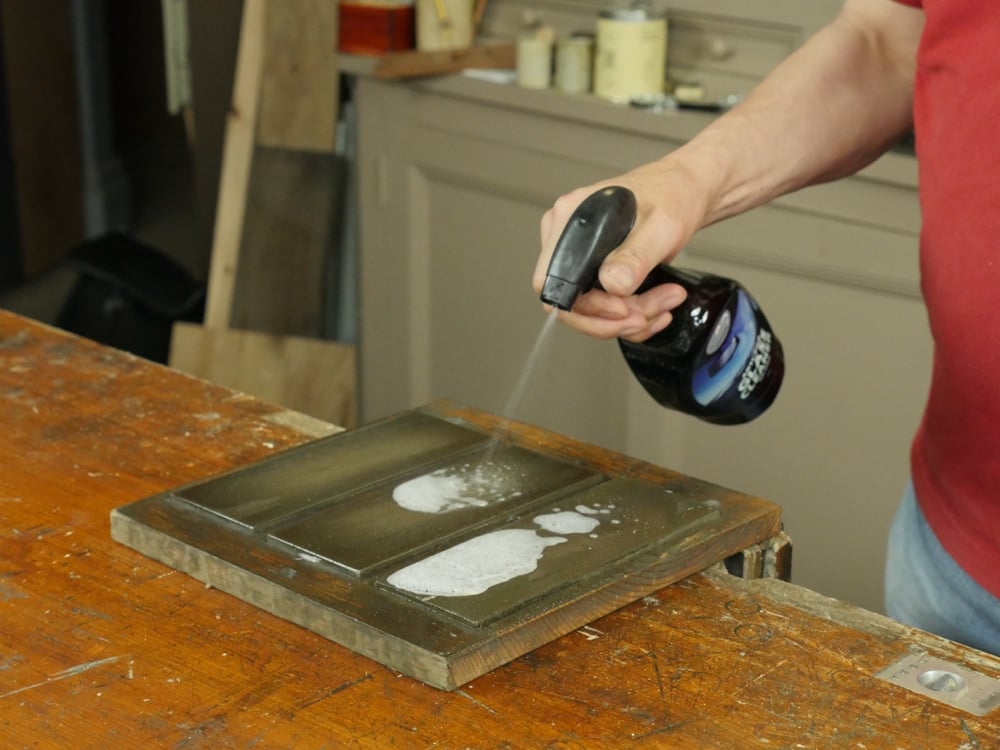
The concern for me is that when anyone starts to do anything new they of course want the best of what they can afford and usually want everything at once. They also want to be be good at what they start out doing. Often, because they set the bar too high under the guise of being a self proclaimed “perfectionist”, they even despise what they consider their amateur results. They would feel much better if they could see the learning curve as the important and necessary rite of passage to maturing levels of craftsmanship. Not wanting the stalled start on a hill nor a kerb-catching three-point-turn is common to us all. But of course with hind sight we see that these false starts and inaccurate turns are what made us the confident and disciplined driver we eventually become and it’s no different when we begin woodworking. If you’re starting out you want automatic or immediate success and so you lean on the assumption that buying the best short circuits the learning curve. In my experience many people, even experienced woodworkers, have often failed to achieve the level of sharpness they truly need and many have never really learned to sharpen well or t the right time either. So for me the essential phase every hand tool enthusiast must master is how to establish sharp edges edge tools and saws, scrapers brace bits and more. None of it is complicated.
In some ways it has been a more recent phenomenon that people have taken on board the essentiality of establishing sharp tools. It is also true that many have become obsessed with the process of sharpening, even allowing it to distance them from the actual process of woodworking to become more a fascination with the sharpening process alone. They tend to see the shavings on the bench as the validation they seek in woodworking mastery when it is just one very tiny but important aspect of the process of becoming. Of course this does not mean that you shouldn’t marvel at the shavings when you just mastered sharpening an edge and setting up your plane. I think that you should and I still do, but it can become more a luxury and for me at least it would have been a luxury I could ill afford as a producing craftsman. I also see this as true for people learning the craft too. That’s because the result of a sharp-edged tool is what you can achieve as a result of the sharp edge and the shaving capability it gives in removing wood by measured and controlled strokes. Not so much just the shaving itself.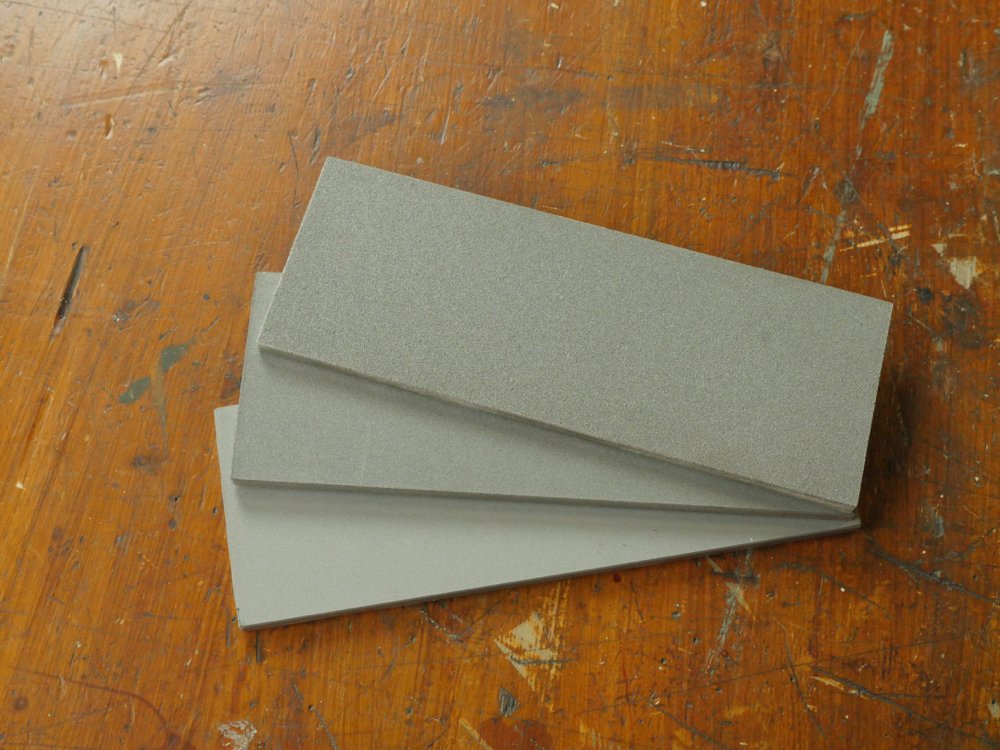
Sharpening should become a seamless transition from dullness to sharpness that gets you back to the task of sawing, planing or chiselling in a matter of a minute or two or even just seconds. It is sharpness that becomes critical to the hand tool woodworker and, because no one else is going to sharpen your tools for you, you must master it as early on as possible in your career. If you are not prepared to sharpen and keep sharp the tools you use, you should perhaps become a machine-only woodworker. As I said above, without pristinely sharpened hand tools the work becomes tedious, hard and dull. The tools become despised. I have seen carpenters and joiners who never gave themselves to true sharpness become embittered in their craft.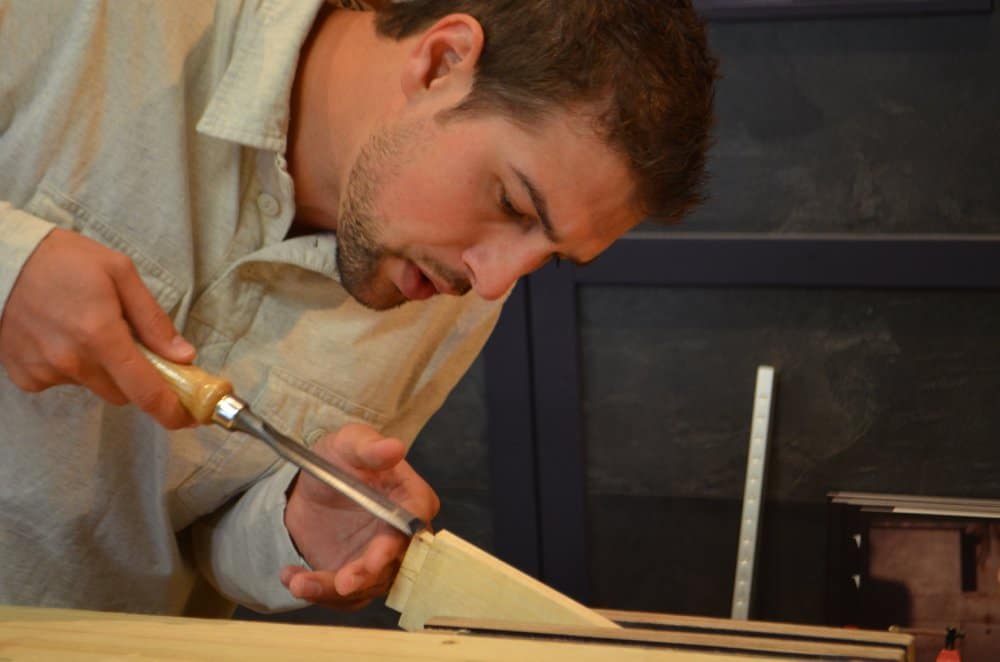
Sharpness equips you for the work. Swipe off a few crisp shavings and you feel like the cat that got the cream or indeed the bee’s knees. You may well have paid upwards of £500 for the experience of using off the peg sharp planes, chisels and saws, but cash-strapped would-be woodworkers can achieve the same results with inexpensive alternatives easily and can access working hand tools that last a lifetime. My tool choices for start-up options follows shortly.


As usual, you hit the nail on the head. I made a false start into woodworking about 15 years ago and the main reason I gave it up was my failing to understand what a truly sharp tool was. I bought shiny new chisels and a three-stone sharpening system, but didn’t really know how to properly use them.
About two years ago, I stumbled across some of your youtube videos and was inspired to give it another try. After a quick trip to a big box store I had some sandpaper and a cheap piece of granite tile and for about $10 I unlocked the key that had been holding me back all along. My dovetails are still a bit sloppy, but I’m happily making progress every time I’m at the bench now.
The EZE-LAP stones that you recommend have been unavailable for about 9 months so I’ve been limping along on with what I have till they become available again. It is frustrating to know that I could have a sharper tool, but I am determined to wait.
Hello Steve, I think that Highland Woodworking has them in stock the 3×8″ if that helps. They were no available when I went to buy them either so I bought the diasharpe and they work just fine. It took me a little while to learn Paul’s method but one I got it I’ve never experienced tools so sharp. Anyway hope this helps.
Chris. M
As of just now Highland WW only has the medium plate in stock. I know that DMT plates are also well regarded, but having already purchased oil stones I don’t fancy anything else but exactly what Paul has found to work well for him in the long term.
I wasn’t well informed when buying oil stones so I go from 240 grit to 2000 grit to the strop. Not a very good setup, but it’ll get me by till EZE-LAP comes back.
I have DMT stones and they’re great. Nothing wrong with oilstones they were used for ages by craftsmen and their work was incredible
I agree with Christopher. From what I understand, and I believe that Paul stated so in one of his blogs, the DiaSharp are of equitable quality as the EzeLap stones. If you can’t get the EzeLap, then get the DiaSharp, and just get going. I too am waiting for the EzeLap, but I’ve already paid and told they will be arriving soon. Until then, I’m using my water stones and following Paul’s techniques. I can’t wait for the diamond plates to arrive, as I’m really tired of the mess with the water stones.
The DMT diamond stones are equally good. I have DMT stones and Ez lap paddles and other products. They are comparable in quality.
You may want to be wary of the coarse EZE-LAP plates as they seem to lose their edge rather quickly (unless it was a one-off bad batch).
See the “longevity of coarse EZE lap diamond plate” (https://woodworkingmasterclasses.com/discussions/topic/longevity-of-coarse-eze-lap-diamond-plate/) thread on the discussions pages.
I ended up getting a refund from the eBay supplier I purchased from. Since then I’ve used (much) cheaper but smaller Am-Tech 6″x2″ plates for general sharpening. I can afford to replace these if they lose their cut but they do seem to be holding up well so far and, if I need a large abrasive area for flattening a plane sole for instance, I use sandpaper stuck to glass.
Hi Steve, whilst I am fortunate to have the three diamond stones set up as demonstrated by Paul at work on the job I still use a twenty year old oil stone with a combination coarse and fine grade and a piece of old leather belt charged up with compound and a bit of oil for stropping. The oils and lubricants have been wide and varied and if it gets a bit clogged kerosene or mineral turps frees it up quite rapidly.
The usage is different and it is a little dirtier but it works very well and it is very cost effective. Again , prolonged use and attention to results make the difference.
The DMT stones are good too. You could give them a try. They sell them in sets at a few websites.
I bought my EZE Lap stones from here, they also have an eBay shop. http://www.ezelap.co.uk/tools/3-x-8—Eze-lap-Diamond-Sharpening-Stones.html
This single post reflects in a few short paragraphs what, with Paul’s inspirational assistance, has renewed and expanded my interest in and enthusiasm for carpentry and tool restoration. It has actually changed my life. For a man in his 50s that alone is quite an achievement. More power to your elbow, Sir!
I think I’ve gotten some way to getting a good result on sharpening chisels and plane irons, but feel I lack the judgement to spot the point at which I should be resharpening. Obviously it’s clear when a tool is blunt, but it’s that fine point at which stopping and sharpening up would make a big difference.
I could also do with more practice in blending the corners/wings of a plane iron – I never quite seem to get the same shape as I see Paul achieve, and do sometimes get a small step in the wood – so there’s clearly need for improvement there.
Hi Paul,
Thank you. Being a new woodworker, sharpening is on my mind and I have made the setup you describe and used it. When buying my first few tools (chisels and hand plane), I wasn’t confident in myself being able to discern good from bad. As such, I bought LN tools based on their reputation and not for bragging rights. I have read that they use A2 steel and it goes longer between needed sharpening’s but doesn’t get quite as sharp. How much sharpness am I giving up by having my bevel edge chisels and plane blades be A2 steel? If I were to switch, is their a recommendation on what kind of steel I should get in my tools and how can I tell good from bad (or less desirable steel)? Many thanks.
Joe. Start buying old cheap tools. Or get some chisels from ALDI. I have a mix of old and new steel in both chisels and planes. I much prefer the old, the new A2 takes longer to sharpen and get a true sharp edge, it always seems a little brittle to me and although they may stay reasonably sharp for a longer period than traditional steel it never seems to have that ultra fine edge that cuts so smoothly. I know many people like the newer technology and it probably has its place but for woodworkers I believe your much better off with the older steel. Or even the ALDI chisels, I find I can get them sharper than any other, they are quick to re sharpen and get back to work with the finest edge you will ever experience. I work away while my equivalent size LN chisel sits there, it’s great to look at but I rarely use it because it always seems thicker and harder and just a hassle to work with. I never get such a fine edge and even if I do it breaks away just as quick as the ALDI (chrome vanadium) chisel. You need to work with them a lot to notice this. Many people will argue and try to say A2 is superior because they want to defend their expensive decision or have been sucked in to marketing hype. Work with them both then form your own un biased opinion. The truth is out there, many just fail to see it for themselves.
Many thanks Andrew. There is no Aldi store near me. Is there another brand of inexpensive chisels that has the quality of steel that leads to excellent sharpness.
Narex chisels are relatively inexpensive and made with excellent tool steel. I have two sets and they perform as well as any other chisels I own.
If you have Harbor Freight nearby, I’ve read that their 4 pack of chisels sharpens up well. Similar price to the Aldi. Haven’t tried them myself, though.
That’s also where I picked up some aluminum bar clamps that are similar to what Paul uses. Very handy.
Thanks everyone for the help and input. I poked around the internet a bit a found a nice (not museum quality but a solid set for woodworking) set of vintage Sheffield tool steel made chisels made back when that area was in its prime steel and tool making days. I should be able to get these razor sharp and I’m looking forward to when they arrive in the next week to 10 days.
I much prefer the feel of old cast steel chisels and I’ve found that they key to a good set is patience. check out antique shops, places that do house clearances, car boot sales and just let people know that you’re looking for them… often people have them lying around
I have a few newer chisels – plastic-handled Marples and Drapers – which I use for on-site work like fitting shelves etc, and while they’re OK, they don’t take an edge or ‘butter’ the wood like the older types. I don’t know much about A2, O-this… but the newer steel feels crystalline and brittle while the old feels leathery and less harsh. the newer chisels hold an edge for longer – because I don’t use them much 🙂
I use a cheap 400/1000 grit diamond stone from Axminster and Hermes abrasive film on glass. I’ve recently found a very fine Arkansas stone which will replace the Hermes film, and I finish as Paul does, with a strop and buffing compound. I’m not as good as him with the angle so I use a honing guide… 🙂
Another post that is spot on…
However I’m still not sure that after 3 years of amateurism I’ve managed to reach the sharp Valhalla…
The problem is how to be really sure if you’re on your own like me. it’s also very difficult to put the tactile experience to words. Often I see comments on posts that somebody has a problem. with this or that tool and sure enough somebody says your tool isn’t sharp enough. I know I can get my edge tools sharp enough to
cut paper
cut hairs off the back of my hand
cut translucent slivers of wood
surely cut my fingers when not careful
yet still, is it sharp enough ? How to know how a properly tuned plane is supposed to feel or a properly sharpened saw for that matter when you have nothing to compare to ?
Diego
If your edge tools can shave hair they are definitely sharp enough.
Very nice point of view, in my profession as a chef sharpness is also key. I was able to get my tools sharp straight away with Paul’s helpful videos. Knife sharpening is different, with the same principals. I am saving up for Eze-lap diamonds but as a cheaper option for people using sand paper wet stones are very reasonable and work well. Also the cheapest place I’ve found eze-laps is at eze-lap.co.uk and they ship world wide if anyone’s found cheaper let me know as I will be buying them soon. Thanks for everything you do for us guys
Hi Paul,
Certainly since I’ve been following your guidance this past couple of years, sharpening my planes and chisels regularly has made a huge difference. I have three No.4 Stanley planes and when sharp, and having set them up following your instructions, they’re a pleasure to use. Even the latter day cheap nasty Stanley one with the plastic cutting iron depth knob and crudely adjustable frog!
My saw sharpening is also coming along, but with more mixed results. Some of my saws cut beautifully after sharpening, others less so. I think this probably due to my eyesight. Despite wearing glasses I have a job keeping track of the teeth and adjusting /maintaining their shape . A magnifier helps, but it can distort the angle of the saw file, so I try to only use it for checking the teeth afterwards. I’m definitely getting better at saw sharpening I think, but just a lot more practice and consistancy needed.
Many thanks Paul for showing us how to go about mastering these sharpening skills.
Use a black marker to mark the teeth
This is an EXCELLENT idea. Thank you so much.
Thanks Rob. I have already tried using a marker for crosscut filing and tooth setting which for both disciplines you need to keep track of alternate teeth. It does help, but for rip cut, where you file every tooth from the same side, there didn’t seem much point (excuse the pun!).
It is getting easier, I just need to keep practising. I bought some quite decent saws for not much money from a car boot sale recently, so I’ve got quite a few to hone my skills on!
I’ve benefited greatly from Paul’s sharpening methods but like many, the “how sharp is truly sharp” has crossed my mind several times. To me, it’s one of those gray areas that isn’t easy for me to define. Can I cut hair on my wrist, or slice that piece of paper held up in front of me easily? Most of the time yes. But some times it takes more pressure than others. It’s at these times where I don’t truly know how or if I need to correct my method(s). I will say, I would never be at my current level without watching Paul’s instructional videos. I just attempted my first card scraper sharpening (after watching others on YouTube) and had a tiny bit of success. I then found Joseph’s video and can’t wait to give his method a go. I really gained some insight that I didn’t learn from the others I watched. Thanks again Paul and Joseph,
Rod Senn
Recall “Rex the Runt” episode where Wendy admonished Bad Bob with: “It’s a poor workman that blames his tools.”
I find it funny that you mention someone who dislikes sharpening should become a machine woodworker. It’s actually my work with machines that makes me appreciate hand tools more. In my experience it’s a constant struggle to keep machines tuned up to the level I want them. I want to work wood, not be a mechanic, so I often forgo my machines – even though I have a good collection – to grab my hand tools.
Like everything else in my craftsmanship, learning to sharpen my tools has been a journey. Last year I built a toddler bed in black walnut for my grand daughter. That project design gave me about 96 linear inches of 3/8” mortise to chop.
The black walnut I was working with had beautiful swirly grain but was hard as can be to cut, very tough on my tools. In fact, this project was an abject lesson to me to be more careful about material selection, but that’s another story.
This toddler bed was the project where I had the experience of finally achieving true sharpness in my chisel. Frustrated with the slow progress and difficulty in chopping the mortises, I committed to sharpening and honing my chisel until I had a mirror finish on both faces adjacent to the cutting edge that would facilitate my chisel bevel to slide as I chopped. I had noticed time and again watching Pauls videos that his cutting tools always have polished faces, there had to be a reason to take the honing to this level. The difference in how the chisel cut with these polished faces was remarkable. Following this I started touching up my edge by stropping my chisel bevel/back much more often to keep the tool cutting as easily as it could. This changes to my sharpening made a real difference in cutting these mortises. I now sharpen/hone to this level with all of my edged tools all the time, and I retouch them often rather than waiting till they’re noticeably dull before resharpening.
I’m also a lot more careful these days about my material selection!
I brought my plane to show my geometry students what a plane really was. Also why it’s called that, hoping the Euclidean definition would stick a little better. Anyway, before I let them touch it I explained that it was sharp. Vapid stares.
“I mean this is the sharpest thing you have ever seen in your life, sharper than anything even in the hospital.”
Now they were listening.
I clamped a scrap 2×4 to my desk and showed them how a plane made a flat surface. The students were shy to try it at first until one of the girls stepped up. She peeled of a shaving and then I had some more volunteers. I think they will remember my class.
Ooooh how I loved reading this! What a teach’.
Thanks y’all! I think that’s the nicest evaluation I ever got. 🙂
I had a very hands on 4th grade teacher when it came to science class. We did things like make paper airplanes to see what made them fly the furthest, designed in small groups taste tests and collect data to see if one tell the difference between coke and Pepsi. Thank you for what you did as a teacher for your students. Nearly 40 years after my lessons with this one teacher I still vividly recall them.
Yeah, those are the things that stick. The more senses we involve, the more we remember. And this is why I love handtool woodwork.
Thanks again to all and esp. to Mr.Paul Sellers for sharing all this advice wisdom and experience. I am watching and reading as much as I can as I re-start my woodworking journey now the kids have grown up, after 20+ years away, I am starting to remember why I loved it so much. Forgotten / lost techniques are coming back and I am seeing / learning and trying new ones I see here as well.
I am getting good results (for me) with plate glass and wet+dry and yes I confess a Honing guide for my plane irons and chisels. I stop at about 1200 grit.
I just tried a simple stropping with some square flat softwood and some SilverL*** green paste stick. Wow I also see the difference is definitely there.
Nice. }8>)
Question:
Once you have established and good edge / bevel from the grinding honing stages going through the grits. How often do you do all that again.? Or is it simply when you perceive to be losing the fine the edge, do you just give it a good stropping again.?
I have restored 2x Stanley planes and 2 sets of chisels more or less exactly along the lines of Paul’s advice and am very pleased with results – my wood is working and looking just marvelous.!
Thanks.!
I am so glad to see I am not alone, since viewing videos and blogs I have been hunting for good old proper Sheffield tools to restore to usefulness ( in an amateur way for sure) I experienced the delight of my first Tenon (type) saw restoration and sharpening, following Pauls guides. I am not sure I did it correctly in my first attempt, however I know before I started it would not cut, when my attempt was complete the small piece of scrap CLS stood no chance. From discarded rust pile purchased for £3 at a boot sale, to useful if not cosmetically perfect Marples made in Sheffield hand saw. As a previous comment stated my Dove tails are not so good, but I am sure with practice that will change. This series of blogs and videos has also inspired me to take a beginners course at my local college in carpentry, only a 5 week course It is true but I am sure I will learn somthing. Please keep up the great series, your passion for the subject is truly inspiring.
Best regards
Ian B.
Dear all.
I would class myself as an utter beginner having last messed around with wood in school and recently, after retiring, started again. I reckon I’ve just about cracked it on plane blades using a 250 (all diamond plates) to reshape a wonky blade, a 400 to take off the roughness, a 1600 to come down to a wire on the back of the blade and then an 8000 to mirror it. When do I get the sharpening board back out? If I am doing shooting board work I notice two things. The effort required and the fineness of the planed edge. I seem to get a little extra fir on the edge when the blade needs a little love. I do a quick buff on the 1600 to get a burr then the 8000.
We must be careful in trying to emulate Paul. We simply don’t have his experience and it will take much longer than his excellent videos show. Cheers all!
Hello Debra, keep up the good work. All school did for me was convince me I couldn’t do anything, especially woodwork.
I have a handyman business and often plane doors , make things outside houses, pub car parks
etc. Hand tool work usually attracts a crowd and children are fascinated. Often I have to stop work to answer questions and let people have a go. The hundred plus years old saw and the wooden jack plane are always a crowd pleaser.
I have learned so much from Paul’s work and continue to do so.
My Dad always praised the old Sheffield chisels and looking through the names of famous makes I realised he left me a fair selection of the best ones . I tried to find a similar English brick trowel to his original one .It was an Elwell . I only managed to find a later model which could snap a brick in two without coming apart. I know it`s a bad habit and I only did it once .But the makers initials WHS stamped on the trowel were jokingly interpreted as Work Hard or Starve . He would have approved of that .
I once started making a stable router-table and wanted to make drawers for it. I realized, that it is not easy to do dovetails without expensive addon-tools for routers so I searched on Youtube for alternatives. Finally I ended up with some guys doing it with saw and chisel. So did Paul. Paul also had a sharpening course and after finishing the drawers I built his european workbench and since then I only used the router table once or twice for rounding edges – till i learned from masterclass, that you can do that with chisel and a no 4.
Keeping all that sharp in maintaining mode is an easy task i got used to and I am thankfully that I stumbled over Paul’s vids. And the community is a nice one here, but no wonder… I feel good. I have Your 2 books Paul and it is a treasure reading forth and back, every time I find something interesting.
Paul it’s very difficult to write mirth into a reply but if I was standing in front of you and if you had the Canadian sense of humour , I would laugh and say “That’s pretty wordy”
Joking aside, the craft truly comes alive when you are able translate your vision into wood.
Not sure I understand this, which could be because i am not Canadian???
Sorry Paul, that would be the same as a slap on the back with a “That was great.” We Canucks poke fun at everything, mostly ourselves, lots of ammunition. Their is little or no hero worship in Canada, even the PM better be prepared to show up on comedy shows. After travelling in the States or Oz, I’ve discouvered that we Canucks are different,some would say very. If a couple of Canuck, strangers, stop and have conversation , there’s a pretty good chance three sentences in, there would be some humour. Who knew the Canadian identity was to party and laugh, certainly none of the scholars who have studied this since 1867! My son says the cry “Canucks are having a party ” will empty the hostel! If I was from East of the Rockies, it would have been “Pretty wordy,eh” I’ve even found Aussies are more strait laced than we are.